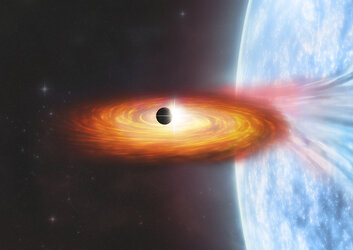Accept all cookies Accept only essential cookies See our Cookie Notice

About ESA
The European Space Agency (ESA) is Europe’s gateway to space. Its mission is to shape the development of Europe’s space capability and ensure that investment in space continues to deliver benefits to the citizens of Europe and the world.
Highlights
ESA - United space in Europe
This is ESA ESA facts Member States & Cooperating States Funding Director General Top management For Member State Delegations European vision European Space Policy ESA & EU Space Councils Responsibility & Sustainability Annual Report Calendar of meetings Corporate newsEstablishments & sites
ESA Headquarters ESA ESTEC ESA ESOC ESA ESRIN ESA EAC ESA ESAC Europe's Spaceport ESA ESEC ESA ECSAT Brussels Office Washington OfficeWorking with ESA
Business with ESA ESA Commercialisation Gateway Law at ESA Careers Cyber resilience at ESA IT at ESA Newsroom Partnerships Merchandising Licence Education Open Space Innovation Platform Integrity and Reporting Administrative Tribunal Health and SafetyMore about ESA
History ESA Historical Archives Exhibitions Publications Art & Culture ESA Merchandise Kids Diversity ESA Brand Centre ESA ChampionsLatest
Space in Member States
Find out more about space activities in our 23 Member States, and understand how ESA works together with their national agencies, institutions and organisations.
Science & Exploration
Exploring our Solar System and unlocking the secrets of the Universe
Go to topicAstronauts
Missions
Juice Euclid Webb Solar Orbiter BepiColombo Gaia ExoMars Cheops Exoplanet missions More missionsActivities
International Space Station Orion service module Gateway Concordia Caves & Pangaea BenefitsLatest
Space Safety
Protecting life and infrastructure on Earth and in orbit
Go to topicAsteroids
Asteroids and Planetary Defence Asteroid danger explained Flyeye telescope: asteroid detection Hera mission: asteroid deflection Near-Earth Object Coordination CentreSpace junk
About space debris Space debris by the numbers Space Environment Report In space refuelling, refurbishing and removingSafety from space
Clean Space ecodesign Zero Debris Technologies Space for Earth Supporting Sustainable DevelopmentLatest
Applications
Using space to benefit citizens and meet future challenges on Earth
Go to topicObserving the Earth
Observing the Earth Future EO Copernicus Meteorology Space for our climate Satellite missionsCommercialisation
ESA Commercialisation Gateway Open Space Innovation Platform Business Incubation ESA Space SolutionsLatest
Enabling & Support
Making space accessible and developing the technologies for the future
Go to topicBuilding missions
Space Engineering and Technology Test centre Laboratories Concurrent Design Facility Preparing for the future Shaping the Future Discovery and Preparation Advanced Concepts TeamSpace transportation
Space Transportation Ariane Vega Space Rider Future space transportation Boost! Europe's Spaceport Launches from Europe's Spaceport from 2012
X-ray serendipity
Thank you for liking
You have already liked this page, you can only like it once!
The purple lines and blotches scattered across this image show something incredible: all of the X-ray sources that were serendipitously detected – that is, not intentionally targeted – by ESA’s XMM-Newton X-ray space observatory from 2000 to 2017.
This image is based on a catalogue named 3XMM-DR8, the latest publicly released catalogue of serendipitous XMM-Newton X-ray sources, created on behalf of ESA by the XMM-Newton Survey Science Centre.
The catalogue, released in May 2018, features sources in the 0.2 to 12 keV energy range drawn from 10 242 observations made by XMM-Newton’s European Photon Imaging Camera (EPIC), an instrument capable of detecting very faint sources and rapid changes in intensity, between 3 February 2000 and 30 November 2017. It contains 532 more observations and 47 363 more detections than the preceding 3XMM-DR7 catalogue, which was made public in June 2017.
While the pattern of sources across the sky may appear random, some structure can be seen here. The oval represents the celestial sphere, an abstract perspective upon which our observations of the Universe are projected. The data are plotted in galactic coordinates, such that the centre of the plot corresponds to the centre of our Milky Way galaxy – and this can be seen in the image. Through the centre of the oval is a horizontal line, where patches of purple appear to draw together. This line is the plane of the Milky Way galaxy, with the large splotch of colour in the centre corresponding to our galaxy’s core, where XMM-Newton made a higher number of serendipitous detections.
XMM-Newton has been orbiting the Earth since 1999, observing the cosmos around us while on the hunt for X-rays coming from high-energy phenomena such as black holes, stellar winds, pulsars, and neutron stars. With every patch of sky that XMM-Newton observes, the telescope detects between 50 and 100 serendipitous sources, such as those shown here, besides the objects that were the original target of the observations. This is due to the large collecting area of the telescope’s mirrors and its wide field of view.
All-sky images and large-scale cosmic data are immensely valuable in our study of the cosmos. Upcoming missions – such as the eROSITA space telescope, a German-led satellite scheduled for launch on 12 July to complete the first all-sky survey in the medium-energy X-ray band, up to 10keV – will add to this wealth of knowledge, and help further our understanding of the X-ray Universe.
-
CREDIT
ESA/XMM-Newton/N. Webb (XMM-Newton Survey Science Centre) -
LICENCE
CC BY-SA 3.0 IGO or ESA Standard Licence
(content can be used under either licence)

XMM-Newton X-ray slew tracks

Sources in XMM-Newton’s second slew catalogue

Optical and X-ray view of active galaxy GSN 069

Illustration of X-ray binary with possible planet















 Germany
Germany
 Austria
Austria
 Belgium
Belgium
 Denmark
Denmark
 Spain
Spain
 Estonia
Estonia
 Finland
Finland
 France
France
 Greece
Greece
 Hungary
Hungary
 Ireland
Ireland
 Italy
Italy
 Luxembourg
Luxembourg
 Norway
Norway
 The Netherlands
The Netherlands
 Poland
Poland
 Portugal
Portugal
 Czechia
Czechia
 Romania
Romania
 United Kingdom
United Kingdom
 Slovenia
Slovenia
 Sweden
Sweden
 Switzerland
Switzerland
























